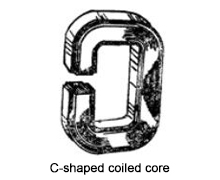What is a Potential Transformer?
A potential transformer (PT for short, also known as Voltage Transformer, VT for short) is similar to a transformer and is an instrument used to convert voltage. A potential transformer is an indispensable electrical appliance in power transmission and power supply systems such as power plants and substations. A precision voltage transformer is an instrument used in electrical testing laboratories to expand the measurement limit and measure voltage, power, and electrical energy.
Potential transformers are very similar to transformers and are used to transform the voltage on the line. However, the purpose of the transformer to convert voltage is to facilitate the transmission of electrical energy, so the capacity is very large, and is generally calculated in kilovolt-ampere or megavolt-ampere.
The purpose of the voltage transformer to convert voltage is mainly to supply power to measuring instruments and relay protection devices, to measure the voltage, power, and electric energy of the line, or to protect valuable equipment and motors in the line when a line fault occurs. and transformers.
The Structure of the Potential Transformer
The basic structure of a PT is very similar to that of a transformer. It also has two windings, one is called the primary winding and the other is called the secondary winding. Both windings are mounted on or wound around the core. There is insulation between the two windings and between the windings and the core, so that there is electrical isolation between the two windings and between the windings and the core.
When the voltage transformer is running, the primary winding N1 is connected in parallel to the line, and the secondary winding N2 is connected in parallel to an instrument or relay. Therefore, when measuring the voltage on a high-voltage line, although the primary voltage is high, the secondary voltage is low, which ensures the safety of operators and instruments.
The Basic Structure
- The basic structure of a voltage transformer is mainly composed of windings, core, and insulation.
- There are two windings of a single-phase two-winding voltage transformer: Primary winding and secondary winding.
- A single-phase three-winding voltage transformer has three windings: Primary winding, secondary winding, and residual voltage winding.
- The windings of three-phase double-winding and three-winding voltage transformers are equivalent to the windings of three single-phase double-winding and three-winding voltage transformers.
The cores of voltage transformers have three structures: Square laminated core, C-shaped wound core, and annular wound core. The square laminated core is made by cutting the silicon steel sheets into square pieces of the required size, and then stacking the silicon steel sheets one by one to form a core. The advantage of this type of core is that it is convenient to wind and insulate the winding of the voltage transformer. The winding and insulation of the voltage transformer can be pre-wound on the winding machine and then installed into the silicon steel sheet core.
Potential transformers of single-phase 35kV and below use a single-column side-yoke core, and the winding is assembled on the center column of the core. The three-phase voltage transformer adopts a three-phase three-column side-yoke type (also known as the three-phase five-column type) iron core, and the ABC three-phase windings are installed on the three middle core columns. Cascade VT of 110kV and above use a double-column iron core, with windings assembled on two core columns.
C-shaped rolled iron core is mainly used for single-phase voltage transformers below 10kV. The iron core is rolled into an oval shape, then sawed into a C shape, and the saw cut is smoothed by a grinder. Two pairs of C-shaped cores form a single-column side-yoke core. The windings are assembled on the columns composed of two pairs of C-shaped cores. After the windings are installed, the original saw edges are glued together. The magnetic performance of the C-shaped core is better than that of the laminated core. When it is small and mass-produced, the manufacturing process is relatively simple.
The annular wound core is suitable for making precision potential transformers and is directly rolled from silicon steel sheets. Since there is no air gap in the core, and the magnetic flux passes along the rolling direction of the silicon steel sheet, the magnetic properties of the core are very good, and the rolling process is relatively simple. The windings are evenly wound on the annular core, and the magnetic leakage is very small.
Features
- Accuracy: Voltage transformers usually have a high degree of measurement accuracy and can accurately measure voltage signals, ensuring the credibility of the data.
- Wide Applicability: Potential transformers can be applied to various voltage levels, from low voltage to high voltage, and are suitable for different application fields, including power systems, industrial production, and laboratory testing.
- Linear Output: Potential transformers usually have linear output characteristics, that is, there is a linear relationship between the output voltage and the input voltage, which facilitates data analysis and processing.
- Fast Response: The voltage transformers can respond quickly to voltage changes and are suitable for applications that require real-time monitoring, such as the transient response of power systems.
- Low Power Consumption: Most potential transformers have low power consumption characteristics and do not consume too much power during the measurement process, helping to save energy.
- Durability: Potential transformers are typically designed to be rugged and capable of operating for long periods in a variety of environmental conditions, making them suitable for outdoor and industrial locations.
- Versatility: Some voltage transformers have multiple functions, such as frequency response, harmonic analysis, waveform capture, etc., which enhance their application range.
- Remote Monitoring: In modern intelligent systems, potential transformers are often integrated with remote monitoring and control systems to achieve remote data collection and real-time monitoring.
- Safety: Voltage transformers are generally designed for safe operation and comply with various electrical safety standards, reducing operational risks.
- Reliability: PT usually able to work for a long time without failure, provide reliable data, and contribute to the stable operation of the power system.
Application Areas
- Power System Monitoring: VT is widely used in power systems to measure voltage signals in high-voltage and low-voltage power grids. This data is critical to the stability and security of the grid, helping operators take timely measures to avoid power failures.
- Transformer and Current Transformer Auxiliary: Voltage transformers are often used along with current transformers to measure current and voltage to calculate power consumption and power factor. This is critical in power system monitoring and management.
- Power Quality Analysis: Potential transformers can be used to analyze power quality issues such as harmonics, fluctuations, and flicker. This is critical to ensure power system stability and equipment protection.
- Transmission Line Monitoring: Voltage transformers can be used to monitor the voltage on transmission lines to ensure signal stability during long-distance transmission.
- Industrial Automation: In the industrial sector, potential transformers are used to monitor and control various electrical equipment such as motors, generators, and frequency converters. They help improve the efficiency and reliability of industrial processes.
- Urban Infrastructure: Voltage transformers are used in urban infrastructure such as traffic lights, lighting systems, and tram lines to ensure their proper functioning.
- Renewable Energy: In renewable energy systems such as solar and wind power, voltage transformers are used to monitor and control power production and delivery.
- Smart Grid: Voltage transformers play a key role in smart grids, helping to achieve remote monitoring and automated management of power systems, improving energy efficiency and sustainability.

Potential transformers play an important role in the power sector and various industrial and municipal applications. The VT provide indispensable data support for the monitoring, control, and maintenance of electrical systems, helping to ensure the reliability and efficiency of the power system. ATO online shop can provide you with high-quality voltage transformers for your power monitoring needs. Our voltage transformers are characterized by high accuracy and reliability, ensuring the stability and safety of your power system. Whether you need support in power system management, energy efficiency improvement, or power load monitoring, we have the products to meet your needs. We insist on quality first and are committed to providing our customers with the best solutions to help you realize the efficient operation of your power system.

